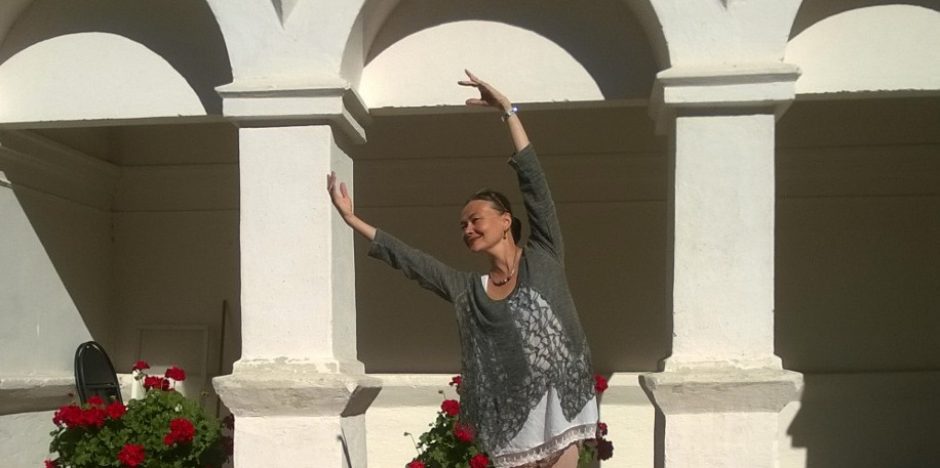”I’ve better pull myself up”, said a young student when he spotted me in the audience at a semester feedback session. Obviously he had embodied my teaching after numerous English lessons starting with adaptations of ballet warm-ups. Yes, my ballet masterly approach can be aggravating at times: “Don’t lean to the hip!” “Stand on both your feet!” “Get out from the wall! It’s sucking up all you energy!” However, my Porvoo students are used to these drills, to the extent that a first semester student sent me a link to a TED-talk by Harvard Business School sociologist Amy Cuddy: Your body language shapes who you are. Thus I found evidence for what I’ve intuitively known for years: good posture affects your brain chemistry. Evidently my port de bras in class had not been all in vain.
Inspired by Cuddy’s concept of Power Posing, I rushed to class and immediately put the Wonder Woman pose into practice. I added my own flavor to the exercise, the two-minute pose was executed to the ceremonial music of Jean Baptiste Lully. Originally this music was played at the court of Louis XIV in Versailles. The Sun King himself was a professional dancer, expressing power by perfect bodily control. The Wonder Woman pose is very easy – you just stand firmly on your both feet with your hands on the hip. Yet, this position does wonders to your brain. According to Cuddy’s scientific experiments in laboratory conditions, power posing results in a significant increase in testosterone levels. This again makes you feel powerful and assertive. On the other hand, what happens to the brain chemistry when you sit with slouching shoulders staring at the minute screen of your mobile phone? Samples taken from saliva tests indicate that the levels of cortisol increase, this again is the hormone that makes you feel stressed-out.
The Wonder Woman pose is an example of a high power pose, whereas sinking down into a chair with head hanging is a typical low power pose. Cuddy made an interesting experiment in a simulated job interview situation. Participants were divided into two groups: one group was asked to take a high power pose with open chest for two minutes whereas the other group took a low power pose with slouching shoulders. This was immediately followed by a stressful simulated job interview that was recorded on film. Afterwards, the interviews were shown to a test group. Notably, the high power posers were the ones hired for the job! Cuddy draws the following conclusions: before a performance we should not read our notes or check our emails on the smartphone, instead we should stand in a high power pose for two minutes in order to prepare our body and brain for the talk in front of the audience. Cuddy’s slogan is “Fake it until you become it!” In other words, keep your body in a high power pose even if you feel intimidated and would rather let you head fall and shoulders sink. The assertive body position will help you take control over the situation and to think clearly.
Does this work? Yes, apparently it does. This autumn I’ve witnessed some wonderful transformations in my most timid female students. All of a sudden their presentations have become vivid and powerful and there is a new bodily awareness on stage. This is so wonderful to behold that I’ve almost dissolved into tears by some recent performances in class. Once I myself used to be that shy young woman who rarely spoke up – thus I’ve travelled a long journey to feel comfortable when speaking to an audience. I’m happy to share this insight with my fantastic students and I feel that I’ve found my own niche as a language teacher with a strong focus on performance skills.

